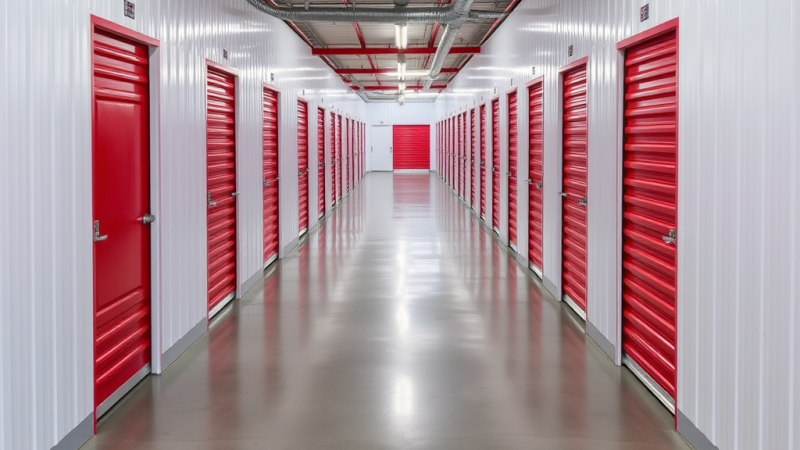Self storage is an excellent solution for managing overflow when you need extra space. Whether you’re moving, decluttering, or simply need a place to store seasonal items, renting a storage unit can be incredibly helpful.
However, as a first-time self storage user, you might find the process a bit overwhelming. From selecting the right facility to packing your belongings properly, there are several important steps to ensure your experience is smooth and stress-free. Here’s your ultimate checklist to guide you through the process.
Assessing Your Storage Needs
The first step in your self storage journey is to assess what you need to store. Take inventory of your items, considering their sizes, shapes, and any special storage requirements. This assessment is crucial in determining the size of the storage unit you’ll need.
Storage units come in various sizes, from small lockers to large garage like spaces. Understanding the amount of space your belongings will require helps you avoid renting a unit that’s either too large or too small.
Additionally, consider whether your items require special storage conditions. Items sensitive to temperature or humidity, such as electronics, documents, or antique furniture, may need a climate-controlled unit. Ensuring that your unit meets these needs will protect your belongings over time.
Researching Self Storage Facilities
Choosing the right storage facility is key to a positive experience. Location is an important factor; a facility that’s conveniently located near your home or workplace will save you time and effort, especially if you need frequent access to your items.
Security features should also be a top priority. Look for facilities with strong security measures, such as 24/7 surveillance, gated access, and individual unit alarms, to ensure your belongings are safe.
Consider the facility’s access hours as well. Some storage units offer 24/7 access, while others have more limited hours. Make sure the facility’s hours align with your schedule. If possible, visit the facility in person to check for cleanliness and maintenance.
A clean, well-maintained facility indicates that the management is diligent about the care of the premises, which often translates into better care for your stored items.
Understanding the Costs
Cost is another critical factor in selecting a storage unit. Self storage costs can vary widely based on location, unit size, and additional features like climate control. Make sure you understand the full pricing structure before signing a contract.
The base rent is usually determined by the size of the unit and the location of the facility. However, there may be additional fees, such as administration fees, late payment penalties, or charges for insurance.
It’s also worth asking about promotions or discounts that the facility might offer. Some storage companies provide deals like the first month free or discounts for long-term rentals, which can help reduce costs.
Packing Your Items Properly
Properly packing your belongings is crucial for their safety during storage. Start by investing in quality packing materials, including sturdy boxes, bubble wrap, packing tape, and furniture covers. These materials will help prevent damage during transport and while your items are in storage.
As you pack, clearly label each box with its contents and the room it came from. This will make it much easier to find specific items when you need them later. If you have large furniture items, consider disassembling them to save space and reduce the risk of damage. Be sure to keep screws and small parts in labelled bags taped to the furniture.
When loading your storage unit, plan the layout carefully. Create an aisle down the middle of the unit so you can easily access items in the back without having to unload the entire unit. This organisation will save you time and hassle later on.
Planning Your Move-In Day
Moving items into a storage unit can be physically demanding, so it’s important to plan ahead. If you have large or heavy items, enlist help from friends or family, or consider hiring professional movers. On moving day, use your inventory list as a checklist to ensure nothing is forgotten.
To protect your most valuable or sentimental items, place them towards the back of the unit or in boxes that are clearly marked. This reduces the risk of accidental damage or loss.
Reviewing the Contract Carefully
Before signing a rental agreement, make sure to read the contract thoroughly. Pay attention to the rental terms, including the length of the lease and the terms for renewing or ending the contract. It’s also important to understand the payment terms, including when payments are due and what happens if you miss a payment. Be aware of any facility policies, such as prohibited items or access limitations, to avoid any surprises later.
Organising Regular Check Ins
Once your items are in storage, it’s a good idea to check on them periodically. Regular visits allow you to inspect for any signs of damage, such as moisture, pests, or dust buildup. If you’re storing items seasonally, plan to rotate them in and out of storage as needed to keep your belongings fresh and ready for use.
Conclusion
Using a self storage unit for the first time doesn’t have to be a daunting experience. With the right preparation and a clear plan, you can ensure that your belongings are stored safely and securely. By following this ultimate checklist, you’ll be well on your way to a smooth and successful self storage experience.

